Romans
London Gate and original city walls
‘Britannia’ became a province of the Roman Empire in AD 43. However, Canterbury’s original defensive walls were not built until more than 300 years later. By this time, the Romano-British town of Durovernum Cantiacorum had reached its zenith. Perhaps it was the citizens who built the defences. On the other hand, this may have been ordered by the renegade Roman general Carausius, who tried to make Britannia his own personal empire at around this time.
Read more on Carausius on Wikipedia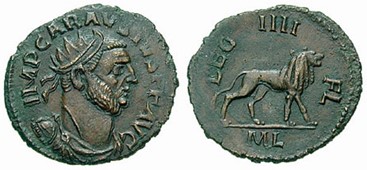
Up to 6 metres high, with an inner rampart, a series of defensive towers, and a massive outer ditch, the walls enclosed the town centre to the southeast side of the river, changing the shape of the town and, in the process, cutting off what is now known as St Dunstan’s.
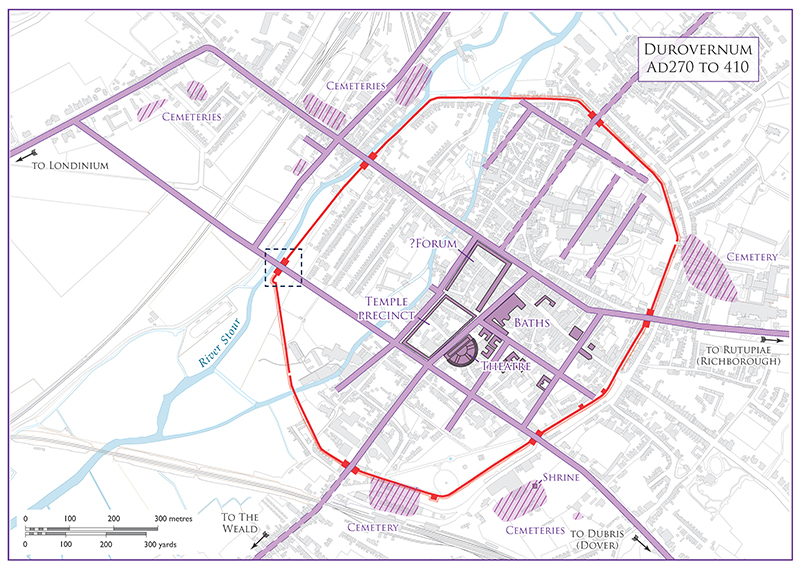
Canterbury’s town walls were built during the period 270–290 AD. In the reconstructed map, the wall is indicated by the red line, the locations of the six original main gates are indicated by red rectangles (bisected by roads, indicated by wide violet lines), and other entrances by red squares. From Dover (Dubris), the ancient, pre-Roman Watling Street entered the walled town from the southeast, through Ridingate (where buses now enter the bus station), and exited toward London (Londinium) via London Gate (dashed box, left centre).
Riding Gate was a monumental structure with guard chambers. In comparison, London Gate was evidently a smaller, single lane portal on the north-west side, built over part of the earlier dual carriage way.
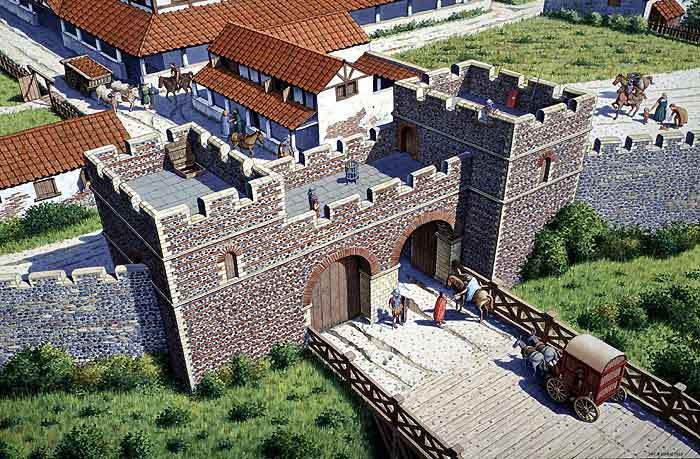
Nothing can be seen of the defences in Westgate Parks today. However, the foundations extend, just below the surface, from Westgate Towers and Tower House down the entire length of Westgate Gardens, turning in a southerly direction more or less where the Rheims Way overpass crosses the river, to run underneath part of Tannery Field. The much later medieval walls, largely built on the Roman period footings, survived into the seventeenth and eighteenth centuries – and it is parts of these medieval walls that survive today.
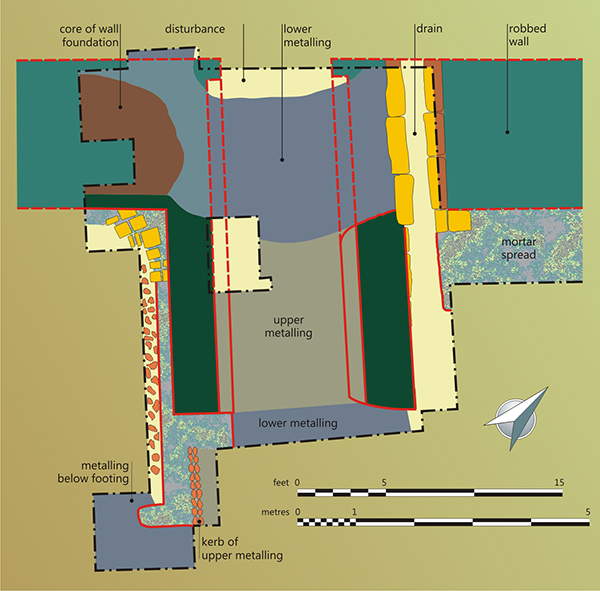
The plan shows how, in 1955, archaeologists uncovered remains of the lost wall, along with the gate, and a section of Watling Street where it passed through. Two levels of road surfacing (metalling) were discovered, as well as the previous, wider surface (metalling below footing) that the gate was built over, reducing the width of the original road. This later, narrower road was also seen in a 2016 HLF-funded community dig, carried out on the far side of the river, where Watling Street crossed the Great Stour, just a few metres to the northwest.
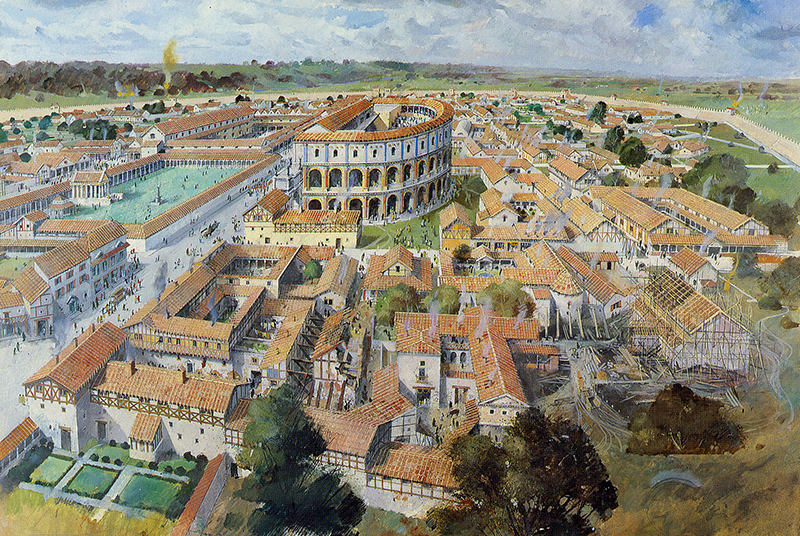
Source: Canterbury Archaeological Trust ©
In the artist’s impression, beyond the imposing, semi-circular theatre, lies the area where Canterbury Cathedral was founded some 300 years later. London Gate was located to the left, and is not shown in this reconstruction.
Want to know more? Look out for Canterbury Archaeological Trust and Historic Towns Trust Historical Map of Canterbury from Roman Times to 1907 – in local bookshops and online via this link :
Canterbury Archaeological Trust Publications Website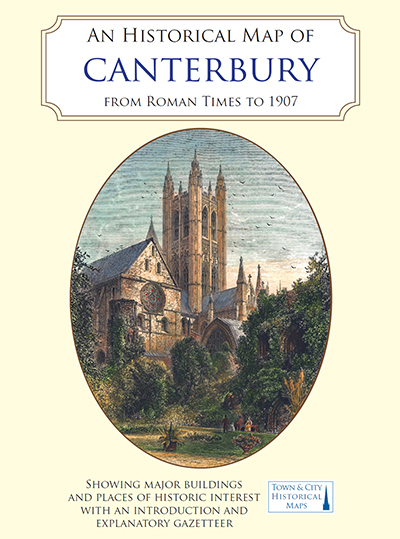
The Westgate Parks London Gate and Original City Walls information board, located in Westgate Gardens at the site of London Gate, was created by Canterbury Archaeological Trust working in collaboration with Friends of Westgate Parks, funded by The Martello Fund and Canterbury City Council, with final design and manufacture by Fitzpatrick Woolmer Design and Publishing Ltd.

Education programs
Available related education programs include river and bat walks, archaeological digs, and forest school activities for children and adults.
Read moreCanterbury Festival
This year's Canterbury Festival runs from 26th September to 4th November 2023. There's walks, talks, art, performance, music & much more.
Read moreHelp the Westgate Friends
We urgently need new volunteers to help maintain the physic garden, assist with collecting litter and also need new trustees – and funds to keep up our activities.
Email us at Westgate Parks friends